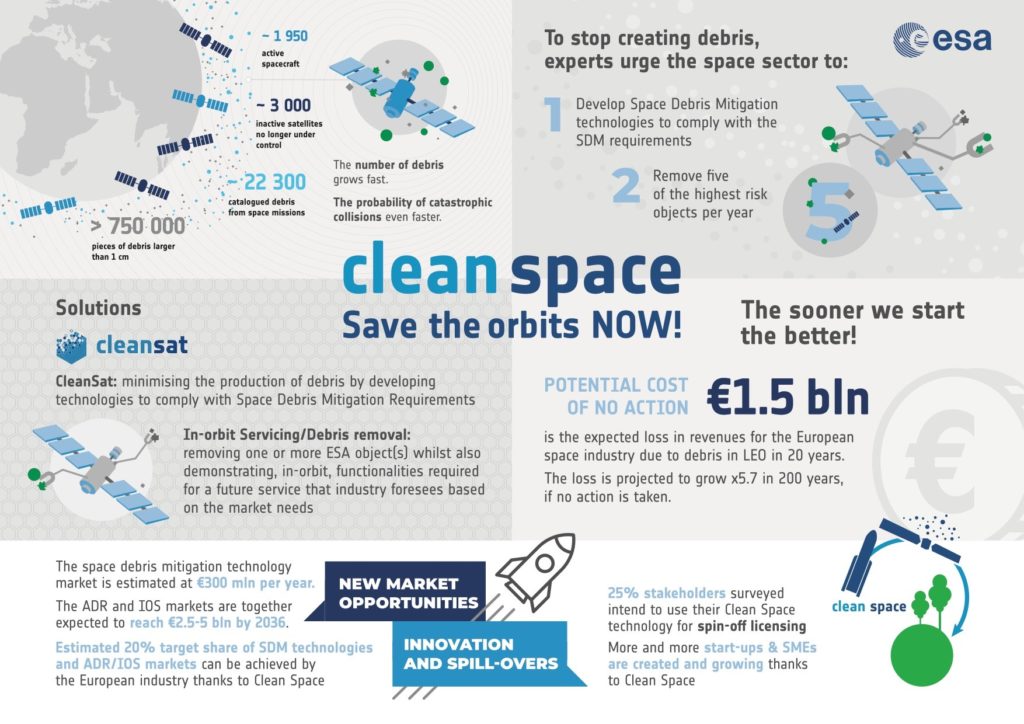
The main objective of Clean Space is to mature technologies in a coordinated approach involving ESA, ESA Member States, system integrators and subsystem and equipment manufacturers to address space debris mitigation and remediation and other hazards across the space industry development chain. This involves measures across the entire lifecycle of a space mission, including development, launch, operation and disposal. Clean Space comprises three branches:
- CleanSat: development of space debris mitigation technologies and design approaches to reduce the production of space debris for future missions
- e.Deorbit (ADR/OOS): technologies development and mission to demonstrate Active Debris Removal (ADR) technologies for defunct space assets, recently reborn as on orbit servicing mission (OOS)
- EcoDesign: development of tools and systems to evaluate the environmental impact and legislation compliance of space programmes